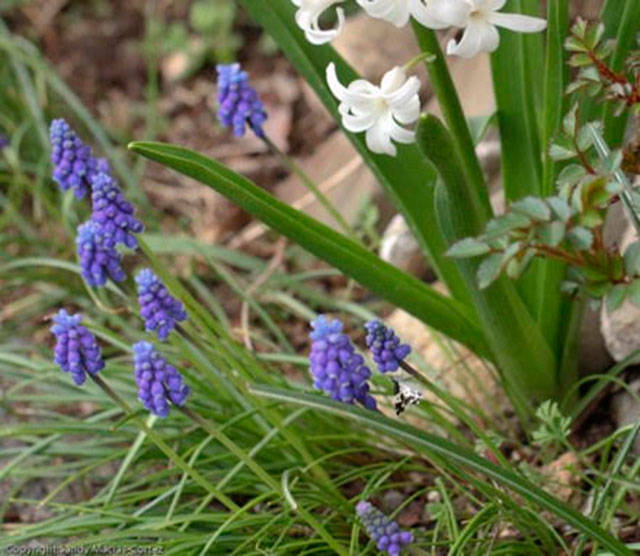Gardeners on the airwaves
Please listen to the Clallam County Master Gardeners on our two local radio stations!
KSQM (FM 91.5) broadcasts “The Garden Show” every Friday evening at 6:40 p.m. and on Tuesday mornings at 11:40 a.m.
KONP (AM 1450 and FM 101.7) airs “Garden Talk” the last Monday of the month from 1-2 p.m. The next program will be April 27.
The Clallam County Courthouse Plant Clinic and Fifth Street Community Garden will be ready for your gardening questions Monday morning April 9 in Port Angeles.
It is finally spring! The vernal equinox has happened. There is enough daylight to get gardening. Are you ready?!
Here is your “honeydew” list:
General: Clean and sharpen tools and mower blades. Check your irrigation system and install a drip system, if possible. Water newly planted shrubs and trees and plan how you will water them all summer; even native plants need extra water for two-three years until established. Harden-off plants moved from the house or greenhouse into the garden by gradually exposing them to outdoor conditions over seven-ten days. Pull weeds.
Patrol for insects and other pests and consult your local Master Gardener for ways to control them. Start your garden journal now while spring energy reigns!
Bulbs: Remove faded blossoms but leave foliage. Fertilize bulbs once after bloom. At the end of the month, plant summer-blooming bulbs, rhizomes and tubers such as gladiolus, lilies, begonias and cannas.
Flowers: Finish pruning established roses. Fertilize established roses every four to six weeks through July; do not fertilize newly planted roses. Do not use pre-emergent weed killer near roses because it damages their roots. Plant seeds of your favorite annuals. Move stored fuchsias and geraniums outdoors; cover if frost returns. Finish garden cleanup and fertilizing. Start your garden journal now while spring energy reigns!
Shrubs: Fertilize rhododendrons with an acidifying fertilizer (e.g., ammonium sulfate) once shortly before blooming and once after. Plant shrubs before the end of April to avoid the stress of summer weather. Prune spring-blooming shrubs after they bloom.
Trees: Still time in April to plant trees before summer weather arrives; do not fertilize newly planted trees. Fertilize established trees only if they show signs of nutrient deficiency (e.g., slow shoot growth or yellow leaves). Come to a Plant Clinic for answers with your questions and challenges.
Fruit trees and small fruits: If you have had past problems with scab or mildew, spray apple trees with lime-sulfur or a multi-purpose fungicide spray registered for use on these diseases; follow product labels carefully. Remove dead canes from raspberries (i.e., last year’s fruiting canes). Fertilize raspberries, blackberries, and blueberries as buds swell with 5:10:10 fertilizer. Plant strawberries now to enjoy sweet fruit this summer.
Veggies: Be sure garlic does not dry out; fertilize it lightly with nitrogen to get lush leaves. Transplant vegetable starts after the last hard frost, hardening them off first. Sow beets, chard, lettuce, onions, peas, potatoes, radishes, spinach, carrots and parsnips. Start tomatoes, squash and basil indoors. Use row covers now to protect spinach, chard and beets from leaf miners. Check cole crops for loopers and other caterpillars. Thin direct-seeded crops as they sprout. Late in the month, plant squash, zucchini, pumpkins and cucumber seeds indoors in large peat pots.
Ground covers/vines: Plant sweet peas. Prune last year’s blooms from heathers and heaths; apply fertilizer and mulch, if needed.
Lawns: Fertilize grass in late April with 3:1:2 slow-release or organic formulations unless you plan to let it go dormant in the summer. Water a new lawn regularly until it is three inches tall. Mow regularly.
Kamera Muralt and Bill Wrobel are Washington State University-Certified, Clallam County Master Gardeners.



